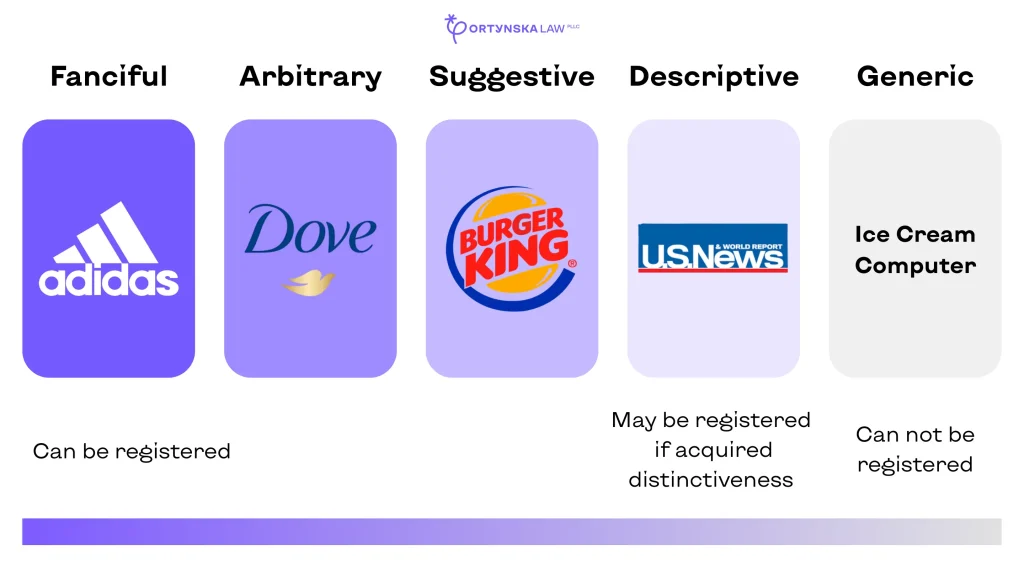“A third party has started using a mark similar to mine. Is this an infringement of trademark rights?”
“I ordered the design of a logo, started using it on my products, and later found out that a similar logo had previously been used by someone else for products other than mine. Is this an infringement?”
Businesses often encounter these questions. Those matters arise for both trademark owners who have discovered similar designations and for businesses that did not conduct a trademark search at the time and later discovered potential trademark issues.
In this article, you will get information on what trademark infringement is, what remedies are available for trademark infringement, and what to expect as a trademark owner or a business that later discovers the existence of a previously registered or common law trademark.
Trademark Infringement
There are various types of trademark infringement, including:
- Infringement of an already registered trademark (infringement under Lanham Act § 32 (1));
- Infringement of unregistered trademark rights (common law trademark, infringement under Lanham Act § 43(a);
- Dilution (infringement under Lanham Act §43(c);
- Counterfeit;
- Some other types of infringement.
Trademark Infringement of a Registered Trademark
According to Lanham Act §32(1), the sale, offer for sale, or advertisement of a trademark is considered an infringement if such actions lead to cause of confusion, or to cause of mistake, or to deceive.
The plaintiff must prove that they have a valid trademark, that the defendant is using this trademark in commerce, and that such actions by the defendant are likely to cause confusion.
According to §1057(b), trademark registration is prima facie evidence of the validity of the trademark. If the trademark is registered, the trademark owner must use it, submit the relevant specimen of use along with a statement of use (between 5 and 6 years after trademark registration, between 9 and 10 years, and every 10 years thereafter), as well as renew the trademark every 10 years.
You may also be interested: Trademark Renewal and Maintenance: How to Keep Your Trademark Active
Trademark Infringement of a Trademark That Is Not Registered
Although trademark registration offers many advantages, even an unregistered mark can be protected under common law. Accordingly, its owner may challenge any use that is considered an infringement of their rights.
If the trademark owner has one or more trademarks registered for one part of the goods and there is use of that trademark for another part of the goods, the trademark owner can base their claims on both §32(1) and 43(c) (for a trademark registered for part of the goods and for a trademark used without registration for part of the goods).
For example, if the owner has registered a trademark for clothing and uses the trademark for jewelry, and another person uses the trademark for both clothing and jewelry, the owner may file a lawsuit based on two claims.
Incidentally, many common law infringement lawsuits can be avoided by conducting a so-called comprehensive trademark search. This includes not only checking federally registered and applied-for trademarks, but additionally to the federal trademark search reviewing 50 states’ trademark registrars and existing common law trademarks.
Likelihood of Confusion in Trademark Infringement Cases
Likelihood of confusion is one of the determining factors and is usually assessed by courts through the application of a multi-factor likelihood of confusion test. The factors of the test may vary from circuit to circuit, but the main ones are similarity of marks and similarity of goods and services (you can find more about this in the article How to Reduce the Risk of Trademark Refusal Based on Likelihood of Confusion), and strength of the plaintiff’s trademark.
Since the strength of a trademark is an important criterion in trademark infringement cases, it is important to assess it both when applying for trademark registration (so-called inherent trademark strength) and during subsequent use of the trademark (so-called acquired or commercial trademark strength). This can play a significant role if the trademark owner decides to initiate legal action for infringement of their trademark rights.
Inherent strength is usually determined by the following classification of distinctiveness:
- Fanciful trademark;
- Arbitrary trademark;
- Suggestive trademark;
- A descriptive trademark that can be protected if it acquires distinctiveness by use;
- A generic trademark that cannot be protected at all.

That is why you should avoid generic trademarks when choosing a brand name. If a trademark is descriptive, it must acquire distinctiveness before it can be registered in the Principal Register.
Various factors, including duration of use, geography of use, intensity, and advertising costs, influence acquired strength. If you are a trademark owner, you should regularly document the use of the trademark, as you may need it for a possible trademark infringement lawsuit in the future.
Courts may also apply other Likelihood of confusion factors, including:
- Actual confusion can be a strong argument to support the Likelihood of confusion.
- The existence of several similar trademarks for related goods and services may weaken trademark strength.
It should be noted that confusion usually concerns consumers, but in some cases may also concern non-consumers.
This concludes Part One. Part Two of the article explores the types of trademark dilution and counterfeiting, and provides practical guidance on how to respond if you discover infringement of your trademark rights or receive a claim or complaint alleging infringement.
If you need legal guidance regarding trademark infringement, contact Mariya Ortynska at m.ortynska@ortynskalaw.com or book a free consultation.
